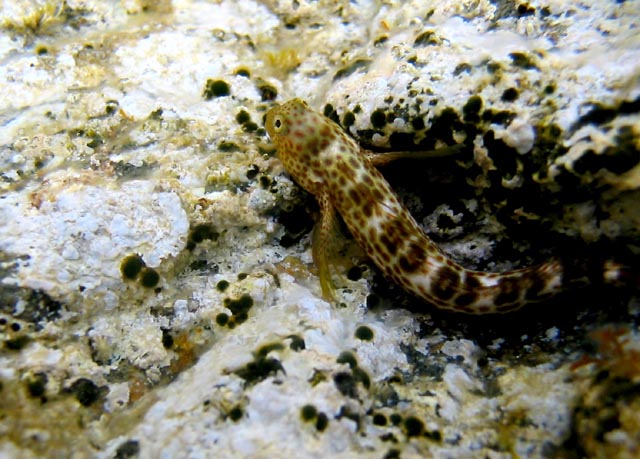| Blenniidae (Combtooth blennies), subfamily: Salariinae |
| 7.5 cm TL (male/unsexed) |
|
demersal; marine; depth range 0 - 2 m |
| Northeast Atlantic: off southern Portugal and in the Mediterranean Sea. |
|
Dorsal spines (total): 8-8; Dorsal soft rays (total): 15-15; Anal spines: 2-2; Anal soft rays: 16-16. Description: Mature males during the breeding period (similar to its congeners under Microlipophrys) take a typical color with a yellow and black head (known as 'reproductive mask'). All general and specific morphological and chromatic features reported for the paratype of L. heuvelmansi clearly refer to a mature male specimen of M. canevae (Ref. 106103). |
| Adults prefer steep rocky walls. They feed on small invertebrates especially crustaceans; also feed predominantly on algae (Ref. 5981). Oviparous. Eggs are demersal and adhesive (Ref. 205), and are attached to the substrate via a filamentous, adhesive pad or pedestal (Ref. 94114). Larvae are planktonic, often found in shallow, coastal waters (Ref. 94114). |
|
Least Concern (LC); Date assessed: 10 March 2014 Ref. (130435)
|
| harmless |
|
Source and more info: www.fishbase.org. For personal, classroom, and other internal use only. Not for publication.

